Last Updated on March 25, 2024 by
Manas National Park situated at the foothills of the Himalayas in the state of Assam of India is full of unique biodiversity and unparalleled landscapes. It has its own charm of beauty and wildlife merged to give an amazing ride in the greens of the forest. A jeep ride to explore the hidden diversity is ideal to see the Indian one-horned rhino basking in the sun or the birds enjoying their breakfast. A ride on the slow water raft on Manas river will expose you to the white sand river bed and the wild buffalo and spotted dear doing a peek a boo from the elephant grass.
Thanks to our trip to Meghalaya, we got the opportunity to visit its neighbouring state.
Table of Contents
Where is Manas National Park
Manas National Park is a national park located in the state of Assam and situated 135km from Guwahati. While Kaziranga National Park always steals the limelight, Manas equally deserves a visit as it is a UNESCO Natural World Heritage Site, a Project Tiger reserve, an elephant reserve and a biosphere reserve. Located in the Himalayan foothills, it shares its boundaries with the Royal Manas National Park in Bhutan. The Manas River divides the Manas National Park in Assam and the Royal Manas National Park in Bhutan
History of Manas National Park
Manas National Park, Assam is blessed by a semi-tropical climate and hence is home to some of the most exotic and endangered species of species in the country. The dense deciduous forest is so thick that it limits the sunlight penetration in certain areas. However, Manas has seen bad years. During the civil unrest in the 1980s and early 1990s, the local wildlife was devastated. The area lost almost all of its 100 rhinos and other wildlife such as swamp deer, wild buffaloes, elephants and tigers. Manas was revived in the mid-2000s from being a dead park and there were many efforts by the community for its conservation by rehabilitating the poachers. It is really interesting how ex-poachers turned into the protectors of Manas National Park. Hence was born Manas National Park Tourism.
It is not only the wildlife and forest which is the highlight of Manas National Park. Manas River which flows through the forest offers stunning views and offers a natural border between India and Bhutan. Get mesmerized by the Bhutan hills gradually rising up from the white sandbanks of the Manas River. Enjoy the bliss and tranquillity of the water flowing over the soft rocks while a Hornbill flies across the border quietly disappearing into the Bhutanese hills.
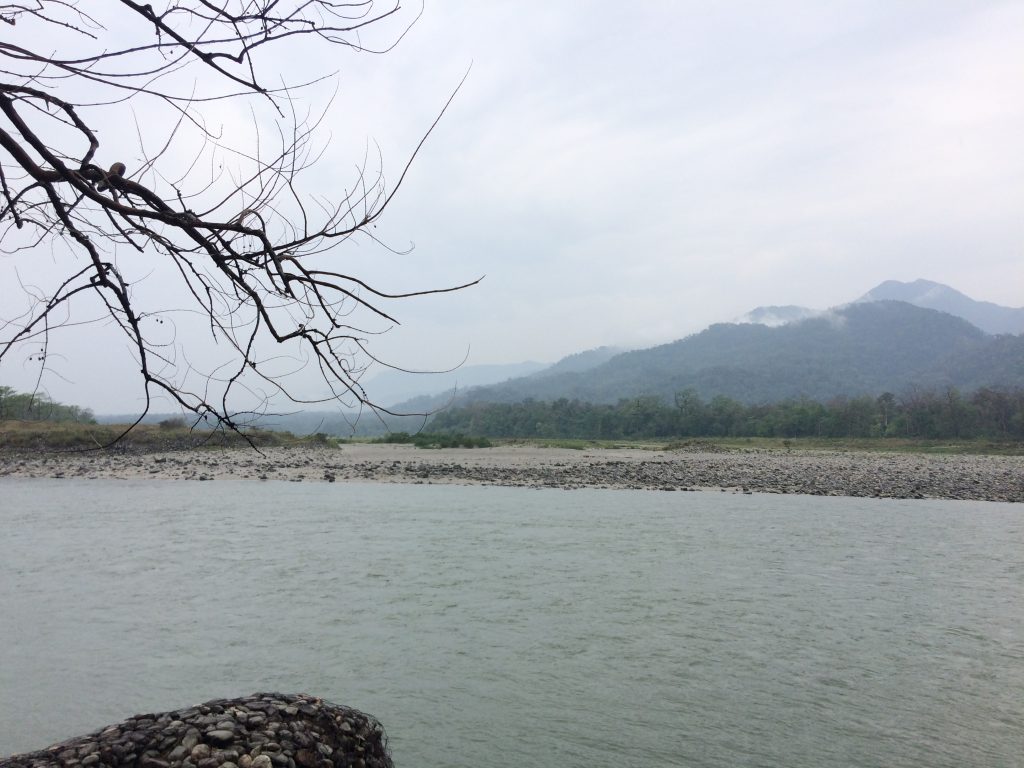
Wildlife of Manas National Park, Assam | What is Manas National park famous for?
It is difficult to answer – Manas National Park is famous for which animal?
Manas National Park animals range from 55 species of mammals, 380 species of birds and 50 species of reptiles. It is quite easy to spot Asian elephants, Indian one-horned rhinoceros, tigers, Indian gaur or water buffalo, Assamese Macaque, Hoolock gibbons and Red panda.
If you are a bird watcher, Manas National Park is a paradise for you with more than 450 species of birds, which include the endangered Bengal Florican, Giant Hornbills, Fishing eagles, Jungle fowls, Finn’s weaver and Magpie Robins. Common species include Small Minivet, Grey-headed Canary Flycatcher, Pied Flycatcher, Black rested Bulbul, Lesser Adjutant Stork, and Russet Sparrow, which are frequently seen.
Here are the Manas National Park attractions that are must add to your list:
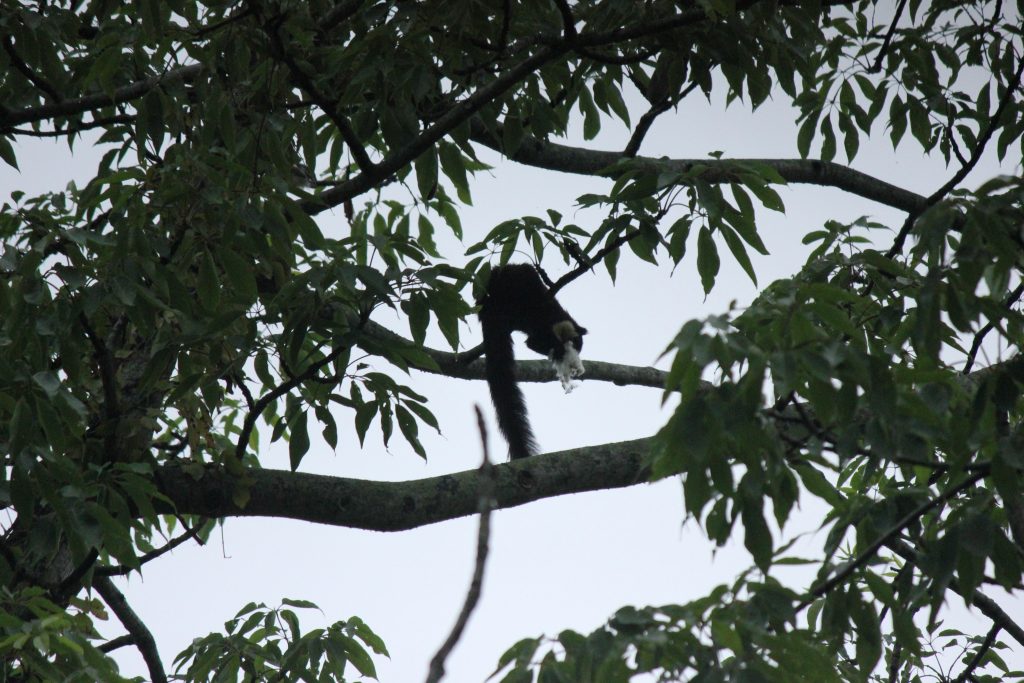
Manas National Park Safari
It is surprising as a lot of people have not heard of Manas. Even my friends ask me where is Manas National Park. And it was a bigger surprise for them when I visited Manas twice. Yes, it is amazing that one visit cannot do justice to it.
With a dense forest cover, visitors need loads of luck to spot any animals or birds and are luckier to be able to photograph them. Like all national parks and sanctuaries, it is best to start early to get the best of wildlife and weather. Visitors may opt for an elephant safari as they can leave dedicated vehicle tracks and go in marsh areas which give a better chance to spot the elusive Indian Rhinoceros and Tiger but ethically it is best to avoid them!
Being in the Northeast of India and a different terrain altogether the wildlife of Manas National Park here is very different from Western and Central India which makes it even more exciting to click photos. During my 2 visits here, I have spotted Indian Rhinoceros, Asian Elephant, Red Panda, Barking deer and Golden langur. In birds, I have spotted Oriental Pied Hornbills, Serpent eagle and minivets.
Manas National Park has survived poaching but there is still a threat to the animals and birds due to habitat destruction.
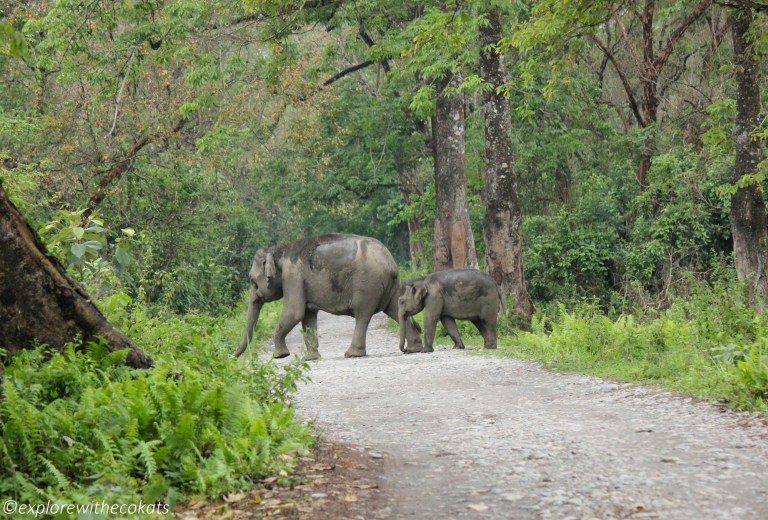
Things to do in Manas other than a wildlife safari
If you are not interested in wildlife, is Manas National Park worth the visit?
Yes, a hundred times yes. The forest of Manas is lush green and taking a ride in the forest is the perfect way to unwind. Read how Vacation in Indian Jungles is therapeutic.
Other than jeep rides, Manas provides something most other parks don’t offer.
Manas River Rafting
While travel to Rishikesh is quite popular for adventure watersports like water rafting, very few people know that Manas also offer water rafting. Albeit, a slow one.
Slow water rafting, managed by the forest officials and Assam tourism is a one hour journey on the natural flow of water. There are hardly any rapids but the flow of water is good enough for an adventurous ride which gives you a chance to observe the dense forests and maybe also some wildlife. Very few tourists know about the option of rafting on the Manas river and that is why you must go before it gets too touristy and no fun. The rafting begins from Mathanguri which means you need to drive from the park gate to till here in safari jeeps. The forest officials will then take you on the 20km journey ahead.
As lazy as the slow water rafting sounds – it reminds me of lazy pool rides in a waterpark, but it is nothing like lazy. The clear Manas water will make you want to look deep down the river bed and look at some aquatic life. The crystal white river bed with dead logs floating around it will keep you stunned with its pristine beauty. You can easily spot birds overhead not giving a damn about the manmade borders and crossing from India to Bhutan and vice versa. And you can especially not feel lazy as there are chances to spot wildlife on the riverbanks. I happened to spot a bison.

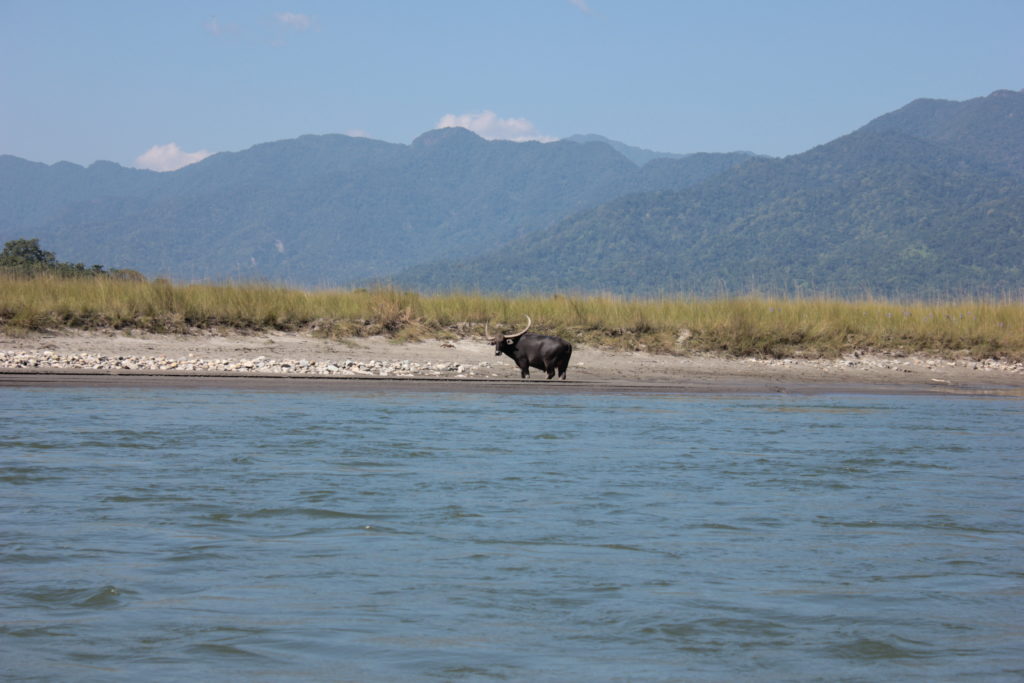
Visiting Assam Tea Estates
Assam Tea is a world-famous beverage. So it is only fair to pay a visit to these tea estates, when in Manas, Assam.
While driving to the Park entrance, notice the tea estates on your right. While a quick photo-op is possible and even allowed for the tourists, it is super interesting to see the entire process. On request, the tea estate owner can allow visitors to stroll in the tea estate and also take a look at the factory. You can see the plucking of tea leaves and the entire process of making leaves into tea powder. If you are a tea lover, you will surely get transported into tea heaven. This certainly reminded me of visiting a tea estate in Munnar.
I was lucky enough to roam in these gardens and also have chai with the owner. He is a good storyteller I must tell you.
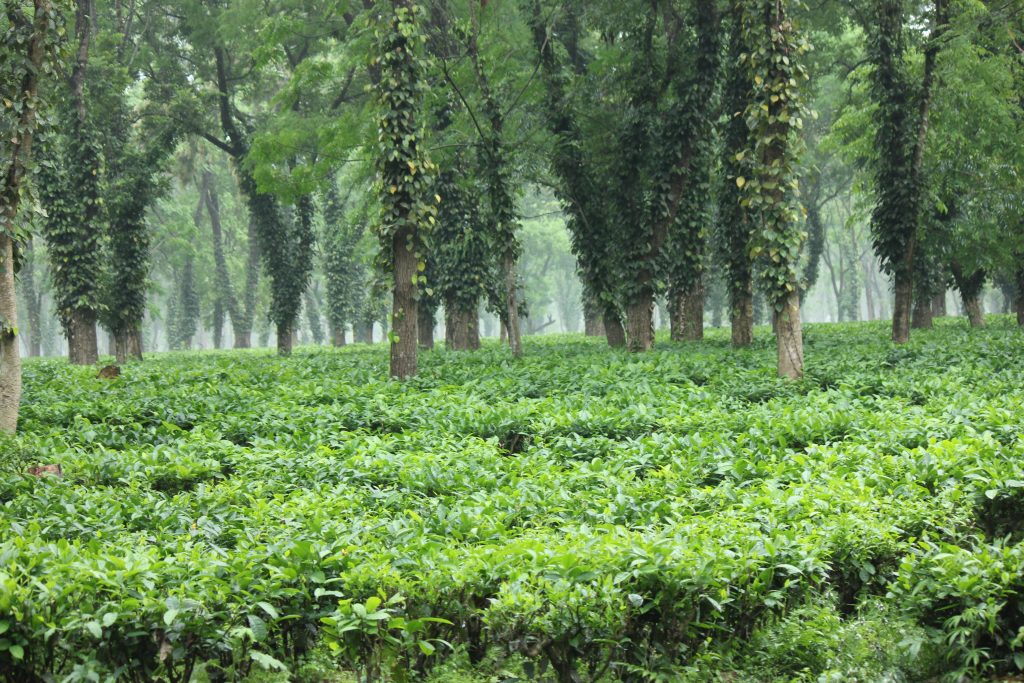
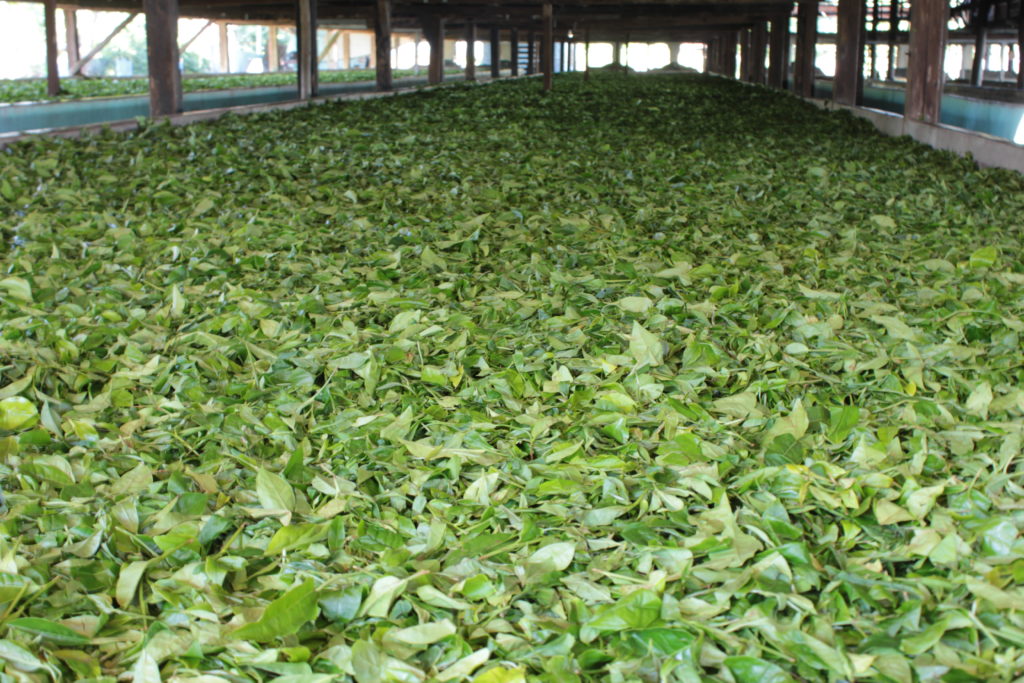
Nature Walk
Depending upon where you are staying around the park premises, most resorts arrange a nature park around their property which is also the fringe areas of the Park. If you are a birder request a birding walk and you will be surprised with the number of birds you will spot with a professional guide or in-house specialist.
Don’t be a fool like me who did not carry the telephoto lens because I did not want to lug around the heavyweight. On one such walk, I spotted the one-horned rhino that I did not spot in the actual safari.
Best Time to Visit Manas National Park
Like every other national park in India, Manas remains closed during monsoon – June to September. Hence the best time to visit is in the winter months – October to February. March to May is extremely humid and may rain in the mornings, lowering the chances of spotting wildlife in the forest. Though safe, it is always advisable to check with the forest department for any untoward incidences in the periphery of Manas as the forest entry may be closed and the safari could be cancelled. Each safari lasts for 3 hours and there are 3 options to choose from. Ideally, go for the morning safari. Manas National Park Safari Timings are:
- Morning safari – 6:30 am to 9:30 am
- Mid-morning safari – 10:00 am to 1:00 pm
- Evening safari – 2:00 pm to 5:00 pm
You can plan a trip around spring to participate in the Manas Spring Festival.
Manas National Park Safari Cost
Like all parks, there are various zones. Manas National Park is divided into 2 zones – Bansbari and Bhuyanpura. Jeep safari in open gypsy is possible for both zones. The safari can be booked online here
Safari cost in Bansbari zone: Approx. INR 4000 (including gypsy, driver cost, permit charges, online payment gateway charges & service charges)
Safari cost for Bhuyanpura zone: Approx. INR 4500 (including gypsy, driver cost, permit charges, online payment gateway charges & service charges)
Up to 5 visitors are allowed to sit in each gypsy.
Resorts near Manas National Park | Hotels in Manas National Park
When I first visited Manas back in 2013, there were only a handful of options to stay. Most people relied on the Forest Rest House. And deservingly so.
The Mathanguri FRH at Manas National Park offers the best views of the Manas forest, Manas River and the experience is amazing. I feel this is one of the highlights of Manas.
Visitors can opt to stay here for the night with a very basic tariff. This place has 6 rooms and needs to be booked in advance. I don’t know about now but when I stayed there in 2013, there was no electricity. The experience of living right in the middle of the jungle at night was nothing less than an adventure.
Hotels and Resort near Manas National Park are:
Bansbari Lodge
Birina Eco-lodge
Musa Jungle Retreat
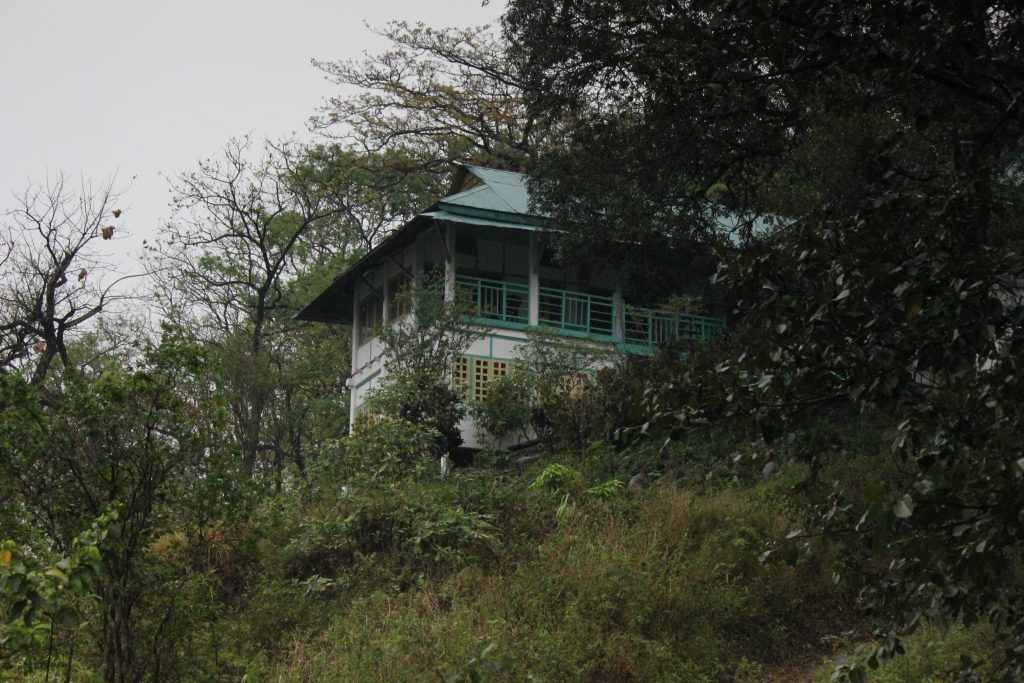
How to Reach Manas National Park
By Air
The nearest airport to the National Park in Assam is Gauhati, which is around 176 km from the destination. Gauhati airport is well connected to the other parts of India through New Delhi.
By Rail
Barpeta Road is the junction which is around 32 km away from the Manas National Park. However, you can travel by train to Gauhati railway station and then travel by road to Manas.
By Road
From Gauhati, take national highway number 31 to reach Barpeta road. Barpeta to Manas National Park is pretty much a straight road. From there the highway will lead you to Bansbari, which is the entry point of Manas. It will take approximately 4 hours to reach Manas National Park.
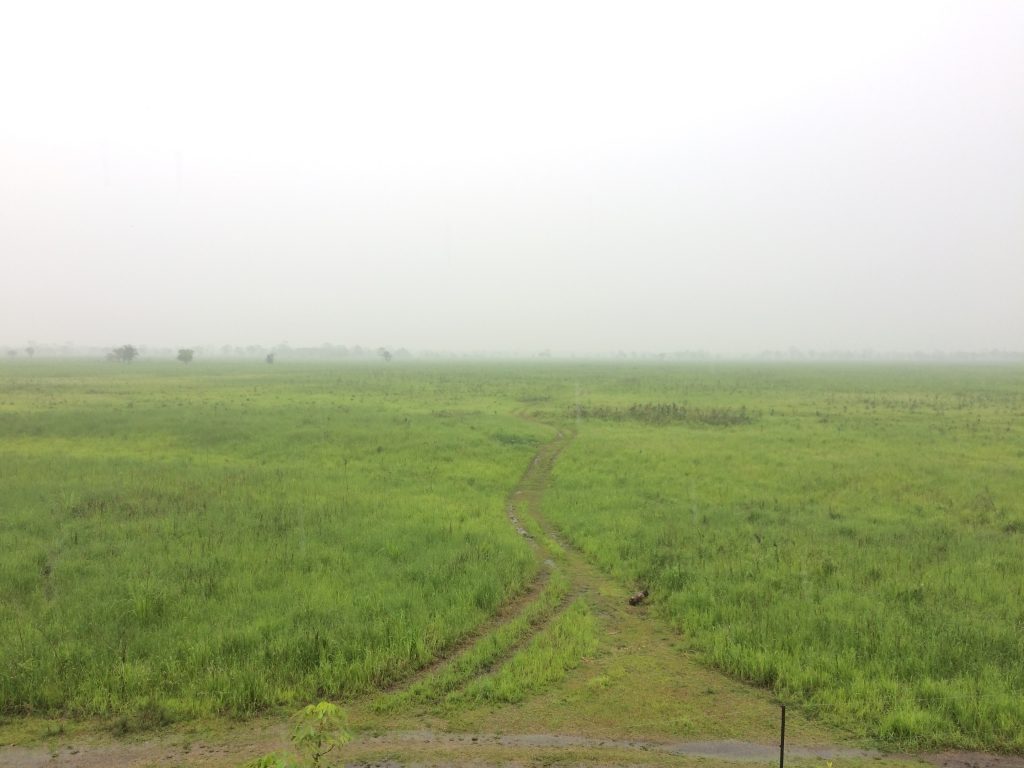
Sustainable travel tips
- Do not get down from the jeep ride in the national park as it is dangerous and against the rules.
- Strictly avoid wearing perfume or body spray with a strong scent. It distracts wild animals.
- Wear camouflage colours that will easily blend with the jungle – shades of green, brown and grey.
- It is totally understandable to get excited when you spot a wild animal in the jungle. But do not make noises – whisper if necessary.
- You may carry water and snacks in the care but do not dispose of plastic or leftover food in the jungle. Keep it in your bag or gypsy and dispose of it safely once you return to the hotel.
- Do not feed anything to wild animals.
Enjoy Indian Wildlife? Read more wildlife posts here
- For Nilgiri tahr: Eravikulam National Park, Munnar
- For Blackbucks: Blackbuck National Park, Velavadar
- For tiger: Jim Corbett National Park , Tadoba National Park
- For Asiatic lion: Gir National Park
Pin this post!
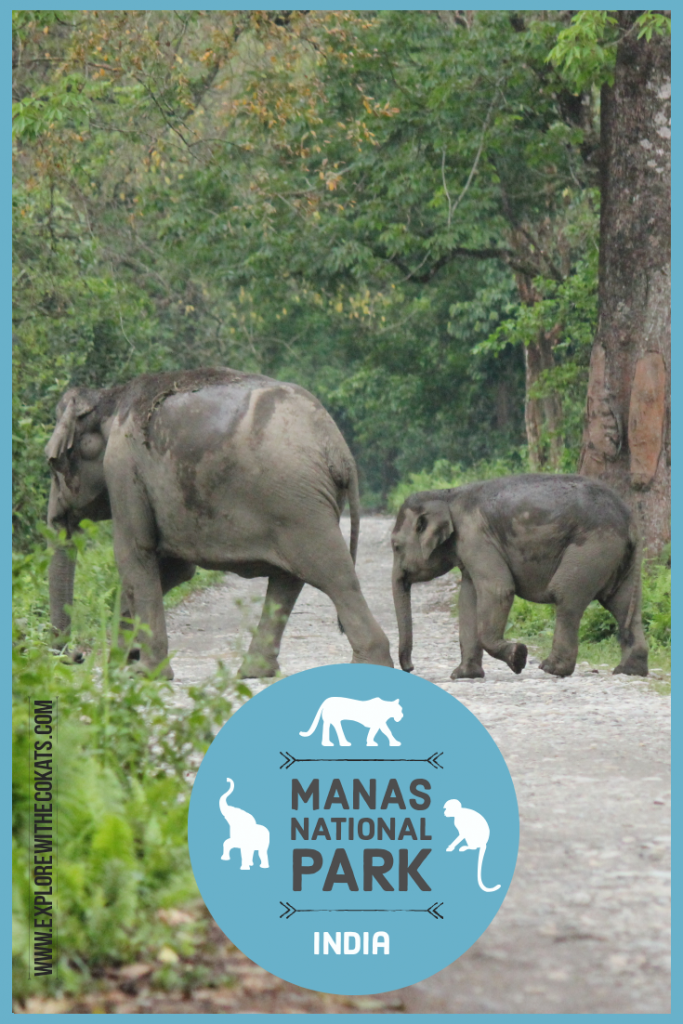
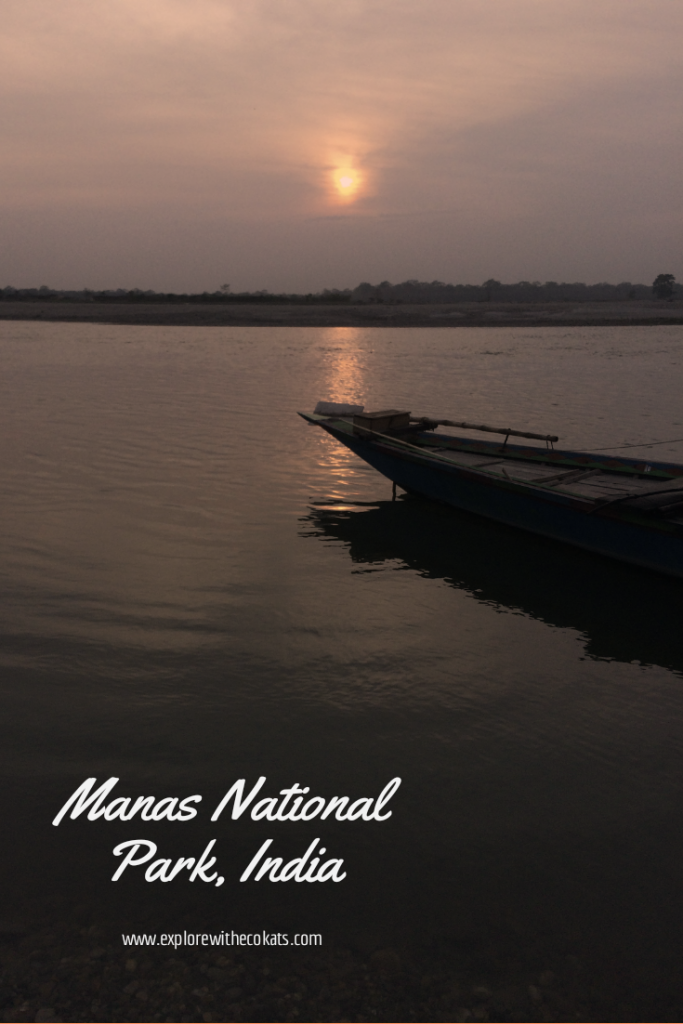



5 comments
Never heard of this park before, yet it looks so nice !!!
Thank you for sharing, I love to discover new places.
love the photo of the elephants 🙂
I love national parks as they are the most beautiful and well taken care of! Great post!
This park looks like fun! Great tips especially to remember not to throw wrappers etc when you are finished with your snack!
[…] a sweltering hot and humid day in Manas National Park, I could not believe it was spring. It felt more like summer and there looked no respite as I […]